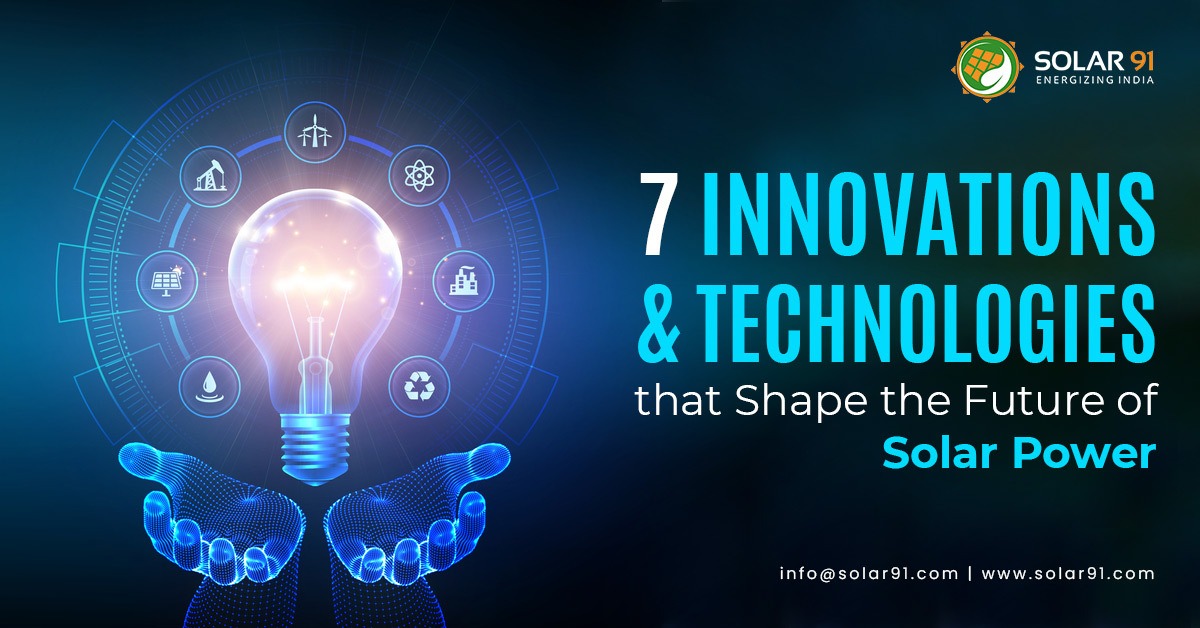7 innovations and technologies that shape the future of solar power
More individuals are becoming aware of which solar panels are dominating the market as renewable energy sources gain traction in the solar power sector. Resources that can improve renewable energy and have a favourable effect on the environment are the need of the hour in the renewable energy sector. Fortunately, solar energy is starting to make significant advancements in terms of design, energy storage, general efficiency, and battery life.
Here, we share a number of cutting-edge solar panel technologies that are reshaping the market. These developments will alter how we now think about solar panels. In other words, 2023 will likely bring forth a lot of innovations
Solar Paints
Solar paint uses the power of the sun to create electricity rather than investing in an expensive solar installation. This paint comprises light-sensitive components that generate electricity to power the facility and is applied to a hard surface.
Because it requires higher levels of efficiency to function, solar paint is not widely accessible, but many professionals in the field anticipate that it will be within the next several years.
Solar windows
It will take more time for solar windows to evolve before they are widely available in stores. Solar windows, on the other hand, are composed of coloured glass and are intended to convert sunlight into power. This innovative technology has the potential to save energy and money in the long run.
Solar-powered automobiles
The market for solar cars is not entirely new. Many engineers are still testing solar automobiles for the general public because they have no harmful emissions.
Solar vehicles, however, might someday be an alternative to the number of fossil fuels that we consume annually.
Solar Transportation On Solar Roads
Consider the potential for solar roadways instead of concentrating on solar vehicles themselves. In several nations throughout the world, solar highways are becoming a potent project.
Solar highways, in the opinion of many, will lower harmful greenhouse gas emissions. Solar highways may potentially be equipped with solar panels to help drivers in arid and unpredictably weathered areas.
Building-Integrated Photovoltaics (BIPV)
Many different types of architecture, including roofs, canopies, facades, skylights, and more, include BIPV solar technology. BIPV is more aesthetically pleasing and does not stick out like solar panels.
Furthermore, employing BIPV has several advantages, including cheaper prices, a favourable effect on the environment, no carbon footprint, excellent energy efficiency, and more.
Solar Skins
Although solar skins have not yet been made available, producers are currently researching and testing this cutting-edge technology to improve its effectiveness. Solar skins blend in with any surface that has a specific pattern, like a grassy yard or a roof. Solar skins are currently a more expensive innovation than other solar energy sources, though.
Microinverters
An intriguing alternative to the inverter device is the invention of microinverters. Solar power is converted into AC power with a normal inverter, which is more expensive. You only need one solar panel and inverter when using microinverters to accomplish the conversion and to meet your energy demands.
Conclusion
The future of solar power is as bright as sunlight. With advances in technology, solar power is becoming more efficient and cost-effective. Solar energy is a reliable and renewable source of energy that is becoming increasingly popular in commercial applications. As the cost of solar continues to decrease, solar power is becoming more accessible to people all over the world. In addition, new technologies are being developed to make solar energy more efficient and cost-effective, such as more efficient photovoltaic cells, advanced energy storage systems, and new methods of installation. As the cost of solar continues to decrease and new technologies are developed, it is expected that solar power will become a major source of energy in the future.

